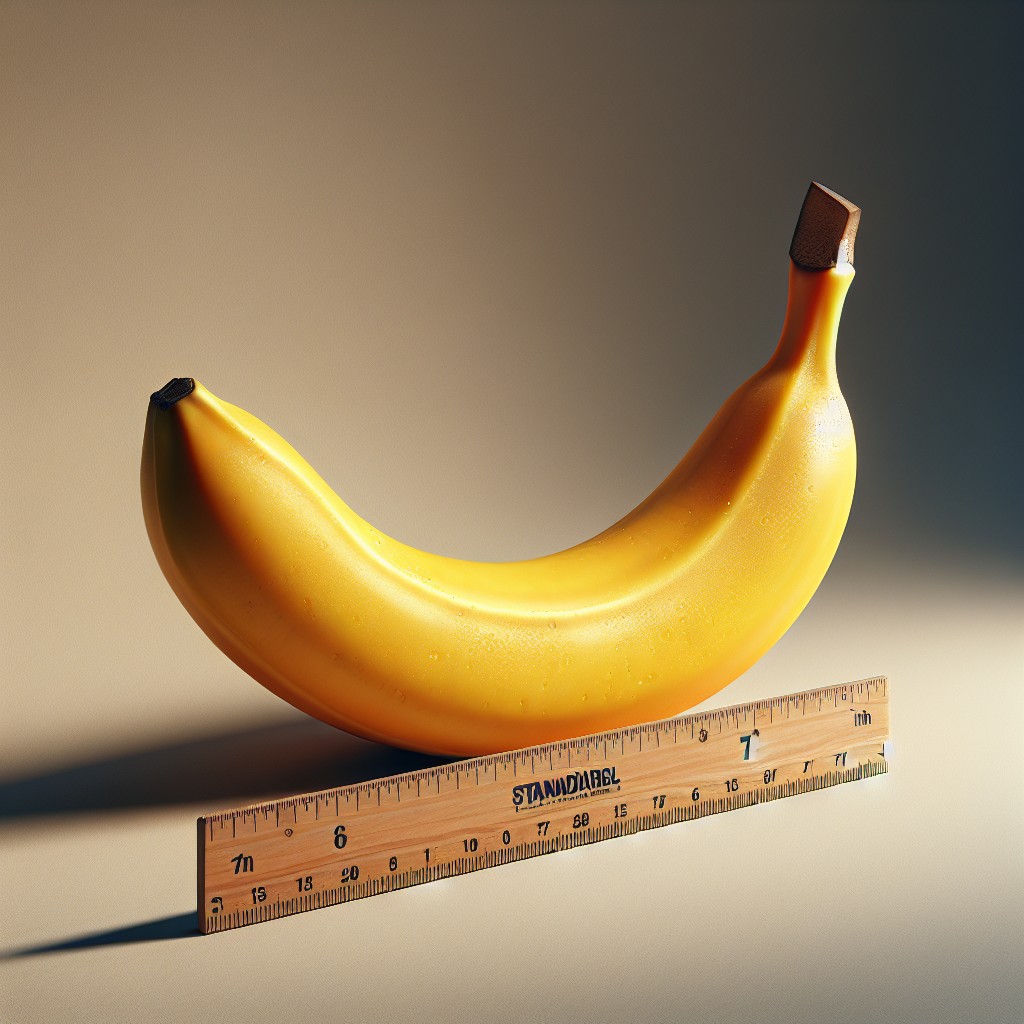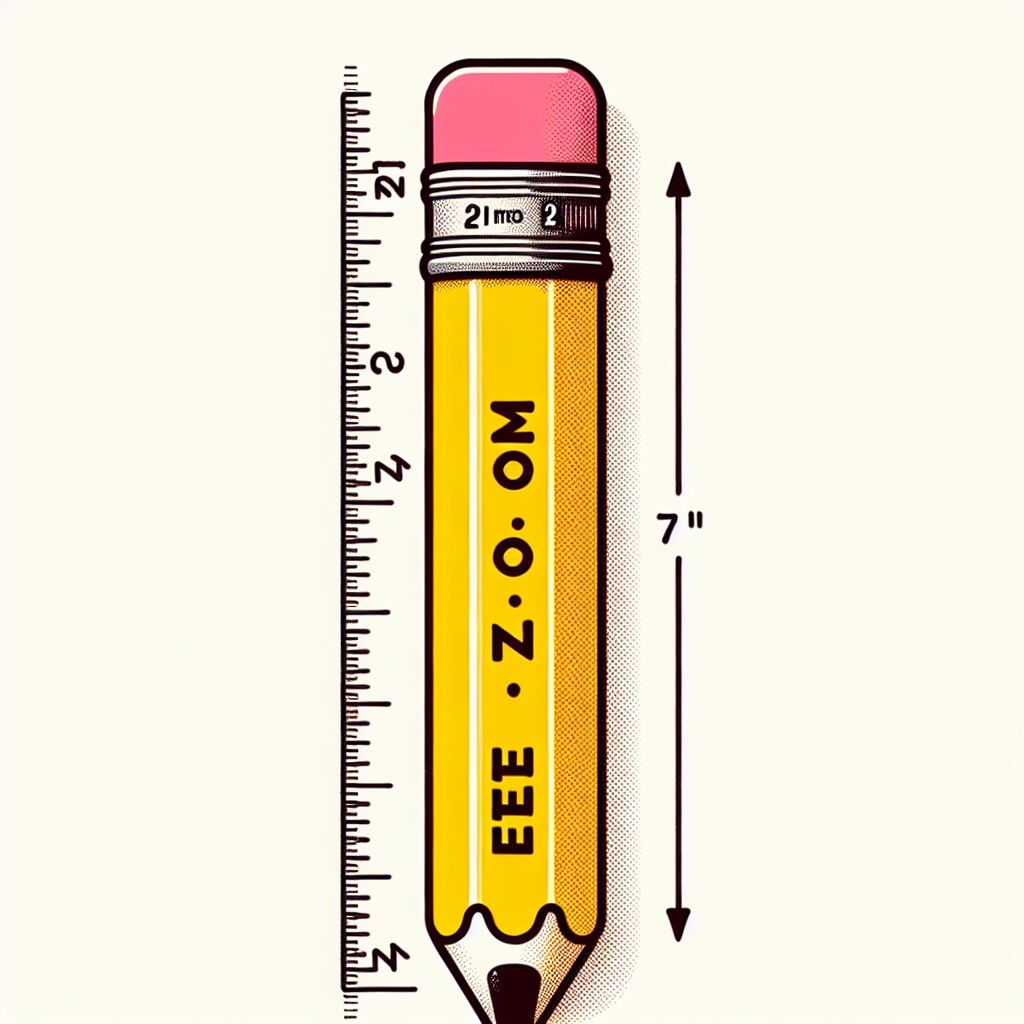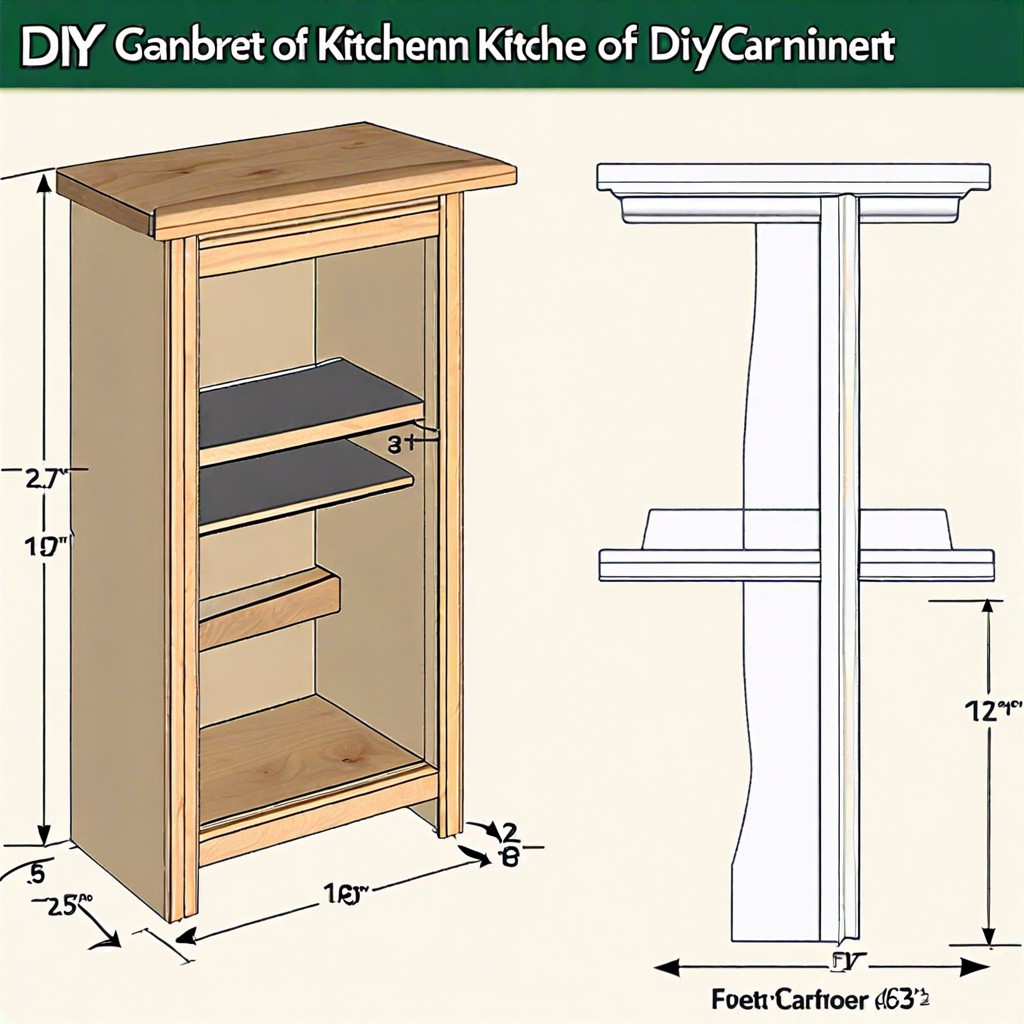Last updated on
Exploring the everyday world around us reveals how many objects measure up to 7 inches, because surprisingly, the mundane often turns out to be the most enlightening place to start.
Getting a clear visual on just how big 7 inches actually is can be surprisingly handy in everyday life. Whether you’re eyeing that perfect nook for your new smartphone, ensuring your art project proportions are on point, or simply trying to pick the right tool for a DIY job, grasping this measurement can make all the difference.
Imagine a standard pencil or the span of an adult’s outstretched hand; consider the alignment of four golf balls or the width of your go-to salad plate—each one offers a tangible representation of the 7-inch dimension.
In the following guide, you’ll find these examples and more, bringing practical clarity to this common measurement and aiding your understanding of its place in the world around you.
Key takeaways:
- A standard pencil is approximately 7 inches long.
- The span of an adult’s hand, from the tip of the thumb to the tip of the pinkie, is about 7 inches.
- Four standard golf balls, lined up end to end, is roughly 7 inches in length.
- A salad plate typically measures around 7 inches in width.
- Understanding the size of 7 inches is practical for various tasks, such as selecting electronics, choosing the right screwdriver, and drawing facial proportions.
What's Inside
Visual Comparison to Common Objects

Seventeen centimeters may seem abstract until you visualize it through everyday items. A standard pencil, which fits neatly between the edges of most notebooks, matches this length almost perfectly.
When reaching for a screwdriver, consider that the handle typically mirrors this measurement, offering a solid grasp.
In your kitchen, you’re likely familiar with a salad plate, often smaller in diameter than dinner plates. Place one on the table and you’ll have a clear depiction of how wide seven inches is.
Another relatable example is the span of an adult’s hand. Stretch out your fingers wide – from the tip of your thumb to your pinkie – and you’ll have a handy (pun intended) ruler that approximates this dimension.
Lastly, imagine lining up four golf balls; the space they cover collectively from end to end conveniently illustrates the size in question.
These tangible comparisons serve as quick reference points, demystifying measurements and aiding in spatial understanding without the need for a physical ruler.
Length of a Standard Pencil

If you’re trying to grasp how long 7 inches is, grab a standard pencil.
Most pencils are approximately 7.5 inches when unsharpened, which means a slight nudge off the end gives you a solid visual comparison.
For artists and students, a pencil isn’t just a tool for writing or drawing—it doubles as a handy measuring device.
Next time you’re sketching or noting margins, consider using that pencil in your hand to estimate the 7-inch mark, providing a practical application for everyday activities.
Span of an Adult’s Hand (from the Tip of Thumb to the Tip of the Pinkie)
When visualizing 7 inches, consider the distance across an adult’s open hand. This measurement is typically from the tip of the thumb to the tip of the pinkie when fingers are fully extended. It’s a practical gauge for everyday estimations, with some interesting points to note:
1. Hand Size Variation: Keep in mind, hand sizes vary, so this method offers an approximate rather than precise measurement. Men’s hands tend to be larger on average, potentially stretching beyond the 7-inch mark, while women’s might fall short.
2. Ergonomics: Many hand-held items, including tools and utensils, are designed with this span in mind, aiming for comfortable use without overextending the hand’s natural reach.
3. Accessibility: Even without a ruler, this impromptu method is always on-hand, pardon the pun, providing a quick reference whether measuring space for small household items or judging the necessary distance for hanging pictures.
Remember, while the hand-span method is convenient, it’s a ballpark figure. For tasks requiring precision, always opt for a standard measuring tool.
Four Standard Golf Balls in a Row
If you’re struggling to picture 7 inches, consider lining up four standard golf balls. Each ball has a diameter of about 1.68 inches, and when placed side by side, they’ll span roughly the length we’re discussing. It’s a tangible example that’s easy to set up with items you might find around the house or garage, providing a quick visual cue for that size. This method is particularly handy when you need a mental reference for comparison or if you’re away from your toolbox and need to estimate measurements.
Width of a Salad Plate
Imagine you’re setting the table for a light lunch. You reach for a salad plate, which typically measures around 7 inches across. This is not as wide as your main dinner plate, which allows it to be comfortably used for smaller, often healthier portions like salads or appetizers.
When shopping for dishware online, noting this common measurement can guide you to select the right size for your needs. Understanding this dimension helps in meal presentation, ensuring you have adequate space between each plate setting for a harmonious table arrangement.
Moreover, when packing for a picnic or storing your plates, appreciating their size simplifies planning. Remembering the 7-inch reference can quickly assist you in various dining and kitchen-related activities.
Practical Uses and Contexts
Imagine shopping for a smartphone online. A description notes that the device is 7 inches long. Visualizing this helps to understand how the phone might fit in your hand or pocket. Similarly, this size is common for portable gaming systems, making them ideal for on-the-go entertainment without taking up too much space.
In the toolbox, a screwdriver with a handle this length offers a comfortable grip for most, providing enough leverage for various DIY tasks without being unwieldy.
For artists, 7 inches becomes a unit of measure in drawing. It can help art students learn about facial proportions since the average face is about seven inches from the chin to the crown.
A practical grasp of this measurement simplifies everyday tasks, from installing a new screen protector perfectly to hanging a shelf with the right spacing. Understanding this dimension is key in carving out spaces that are as functional as they are visually pleasing.
Sizing for Small Electronic Devices (e.g., Smartphones, Portable Gaming Systems)
When considering the purchase of a smartphone or portable gaming system, understanding the device’s dimensions can greatly influence user experience. A 7-inch screen size is considerably comfortable for gaming sessions and video playback, striking a balance between visibility and portability. This form factor can fit into larger pockets or small bags with ease, making it ideal for on-the-go entertainment.
For smartphones, this measurement often reflects the diagonal screen size rather than the full device dimensions, due to varied bezel designs. Hence, two devices boasting a 7-inch display might have different overall sizes. It also pays off to consider the resolution and aspect ratio, as these elements, in conjunction with screen size, dictate the clarity and immersion of the viewing experience.
In a marketplace abundant with size options, remember that hand size and usage habits should guide your decision. Test various models when possible to gauge what feels comfortable in terms of one-handed use and visibility. This hands-on approach ensures the device chosen matches both size preferences and practical requirements.
Typical Length of a Screwdriver’s Handle
When selecting a screwdriver, one of the key ergonomic features to consider is the handle size. Approximately 7 inches is standard for many models, offering sufficient leverage and grip for a variety of tasks. This size typically balances well in the hand, facilitating both precision and torque.
- Comfort: A handle around 7 inches allows most users to wrap their fingers comfortably, ensuring a secure grip and reducing hand fatigue.
- Control: The length is conducive to controlled and precise movements, important in avoiding stripped screws or surface damage.
- Versatility: At this length, the screwdriver is long enough to tackle most jobs but still compact enough for a household tool kit.
In essence, understanding the typical handle length helps users select the right tool for both their hand size and project needs.
Reference in Art and Drawing (e.g., Facial Proportions)
In the realm of art and drawing, understanding a 7-inch measurement can be pivotal, particularly when it comes to capturing human facial proportions accurately. For instance, the average adult face is roughly 6 to 7 inches long, so an artist might use this measurement as a baseline when sketching portraits.
Here are a few pointers to help artists incorporate the 7-inch reference:
- Classic Proportion Rule: Aligning with the “rule of thirds,” artists often find that from the hairline to the eyebrows, eyebrows to the bottom of the nose, and nose to the chin, the face can be sectioned off into approximately equal thirds, each being close to 2.3 inches, adding up to around 7 inches total.
- Scale for Consistency: When drawing multiple figures, use the 7-inch facial measurement as a guide to ensure proportionate scaling between characters, maintaining a consistent relational scale.
- Vertical Division: For width, faces are generally five eyes wide – with the eye being roughly one inch across, this translates to a total facial width of 5 inches. This measurement combined with the 7-inch height provides a framework for facial symmetry and alignment.
Adopting such structured approaches helps not only with balance and proportion but also allows the creation of diverse yet realistically scaled portrayals of human subjects.
Measurement Tools and Tips
To accurately measure 7 inches, you’ll need the right tool—either a ruler or a measuring tape. Align the end of your chosen tool with the edge of the object, ensuring it’s flush for precision. Mark the point at 7 inches with a pencil or your finger, and confirm the measurement by checking the distance twice, as minor slips can occur. For digital accuracy, use an app with an augmented reality measuring feature.
Should you need to convert to centimeters, remember the quick math: 1 inch equals approximately 2.54 centimeters. Therefore, 7 inches is roughly 17.78 centimeters. Handy conversion apps or online calculators can do this instantly if you’re not inclined to do the math yourself.
Lastly, familiarize yourself with incremental markings—1/2 and 1/4 inches, as many objects might not measure exactly 7 inches. Understanding these can help in fine-tuning your measurements for tasks that require greater precision.
FAQ
What does 7 inches look like?
Seven inches can be visualized as the length equivalent to seven quarters placed side by side or approximately nine pennies arranged in a line.
What is the meaning of 7 inch?
A 7 inch refers to a phonograph record that is seven inches in diameter, typically featuring one song on each side.
How long is an inch example?
An inch is roughly the length of an adult’s thumb from the tip to the first knuckle, similar to the size of an eraser, paperclip, sewing pin, water bottle cap, U.S. quarter, or Canadian $1 coin.
How long is 7.5 inches on a ruler?
On a ruler, 7.5 inches is exactly at the midpoint between the 7 and 8-inch marks.
What objects in everyday life measure around 7 inches?
Common objects around 7 inches include small tablets like the Amazon Fire 7, typical paperback books, and regular chocolate bars.
How does understanding the size of 7 inches contribute to spatial ability?
Understanding the size of 7 inches contributes to spatial ability by fostering the comprehension of physical dimensions, aiding in visualizing spaces, evaluating distances, and manipulating objects within those spaces.
How can one visualize the dimension of 7 inches without a ruler or tape measure?
To visualize the dimension of 7 inches without a ruler or tape measure, consider the long side of a standard US Dollar bill as it measures approximately 6.14 inches, so add a little more than three quarters of its width extra.




